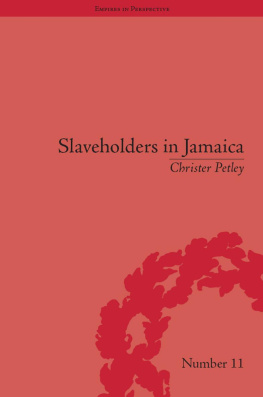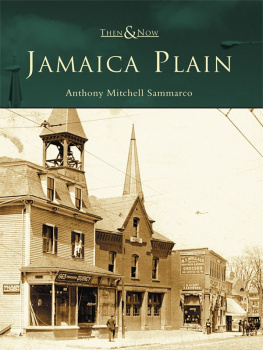
The fourth book in the Wild Mystery series, 2010
For my husband, Tracy
my soul mate
I would like to thank the following individuals for their generous help in my research for this book: Sam des Georges, Multi-Resources Branch Chief for the Bureau of Land Management, Taos Field Office; Dana Weaver, Mary Lou Chernik, and Tamara Stephenson, Field Deputy Medical Investigators for the New Mexico Office of Medical Investigation; Agent Joe Schiel, New Mexico State Police Crime Scene Unit; Terry Coker, Senior Deputy Medical Investigator with the New Mexico Office of Medical Investigation.
This is a work of fiction, and the characters, some of the organizations, many of the places, and most of the events herein are figments of my imagination.
No one outside their dwindling numbers knows much about Los Penitentes, save a few scholars, and a few old-timers who are willing to recount their experiences of a nearly extinct way of life in the remote rural communities of northern New Mexico and southern Colorado. While I have featured Los Penitentes and some of their known practices in this book, I have also taken creative license in order to create a good story. I have featured some of what is known, some of what is written, some of what is rumored, some of what I have been told, a little of what I have seen, and a healthy dose of what I have imagined. As a result, this tale touches upon a real sect and some of their rituals, but does not pretend to be an accurate representation of Los Penitentes or of the Catholic Church. What is true about Los Penitentes is often stranger than fiction, and this yarn is spun from a bit of both. If you do not believe it, it could be true. If you believe it, it could be fiction. Who knows?
One thing that has been well documented is the fact that Los Penitentes practiced ritual crucifixion into the mid-1920s in some remote mountain villages. But that was back when they werent as good at keeping their secrets.
As the elders at Tanoah Pueblo say, this story unfolds time before time. If we watch the hoop of time spinning, we might perceive that it happened first-before all the other stories in the WILD Mystery Series.
But, as the Tanoah know, all time is now.
Therefore I despise myself and repent in dust and ashes.
Job 42:6
Something Falling
It was too quiet, no shrieking. The figure soared downward in silence, the arms stretched out like wings, creating a pale white crucifix form easy to make out even in the frozen gray light of predawn. This jumper did not streamline into a perfect spear for speed like most of them did-rather, this was a swan dive that stretched for seconds before disappearing into the blackness of the chasm.
It was still dark when Id gotten to the gorge that morning to go for a run on the rim before starting my duty shift. I work at the Bureau of Land Management out of the Taos Field Office as a resource protection agent. My name is Jamaica Wild. Most days, I run at sunset, but on this morning I had awakened early from fitful dreams and couldnt go back to sleep, so I figured Id get up and get going. I knew every dip and twist of the trail that skirted along the rim of the jagged crack in the earths crust cradling the Rio Grande-the wild torrent of water that gives life to the high desert. To the east, the sun would soon rise over the Sangre de Cristos, an arm of the Rockies that cupped the Taos Valley and sheltered its fragile beauty. And when the butter-colored light was just beginning to melt down the basalt walls of the gorge, I would be returning to my Jeep at the rest area on the west rim, my lungs full of sage-scented oxygen, my body invigorated, my senses satiated with the beauty around me. It seemed like a perfect plan to begin the day.
I had not gone far down the trail when I looked back toward Taos Mountain and noticed activity on the bridge. In the dim light, I saw a lone vehicle stopped in one of the two lanes, next to a small overlook area where pedestrians could step off the sidewalk onto a bumped-out balcony and gaze down into the rift in the earth at the slim silver river below. Two people scurried around, then centered on the back of the vehicle, where they began unloading something with great effort.
I stopped running and jogged in place, watching.
There had been a rash of base and bungee jumping from the bridge lately-extreme sports whose members thrived not only on the rush from the experience, but evidently on the fact that it was illegal to jump here as well. The scoundrels set up under cover of darkness when there was no traffic on the bridge, then waited for first light to take the plunge. The Rio Grande Gorge Bridge is the second-highest cantilever bridge in the United States; its depth of 650 feet to the river, remote location, and extremely light traffic made it a dream venue for this kind of thing.
They call it practice for suicide. Rip screaming off the tallest structure around into midair and let gravity take over while a tsunami of adrenaline surges through you, producing such a high that you are almost disappointed when the parachute opens or the elastic bungee cord stretches and slows your fall, then springs you back up by your ankle harness.
At first, this was what I thought I was seeing; but this was not what I saw.
Sometimes your senses perceive something so incredible that your mind intervenes and tries to cancel out the incoming information with logic, reason, or experience. When I saw the figure falling, so began a struggle between eyes and mind, between senses and sense, until the clash ignited a flash-bomb of recognition and a snapshot crystallized in my brain, the details etched so vividly that I will never forget them. Blue-white stars flowered the field of dark sky above me even as a penumbra of purple light began to quiver at the top of the mountain range more than ten miles away across the mesa, behind the unfolding scene. An icy draft whistled over the rim of the canyon and rustled the brush, the air dry and mean. The smell of sage and red dirt mixed with the lingering scent of shampoo in my hair. My feet pounded a tempo on the trail as I jogged in place, as if what I witnessed might merely be a temporary detour in my days trajectory. There I was: out on the rim, too far away to do anything to change what was happening.
I saw a body on a cross. Falling into the Rio Grande Gorge. And it did not come back up.
Bridge to Nowhere
Over the next two hours, I observed while personnel from almost every agency in the area assembled to the east of the bridge in the dirt parking area normally used by tourists. The first to arrive, a patrolman in a black-and-white from the New Mexico State Police, closed the bridge. Sheriffs deputies set up roadblocks. A crew from the Taos Fire Department assisted, turning around tourists and through traffic and sending everyone eleven miles south to Pilar, where they could cross the river and drive through the village to the highway. A Taos Pueblo police detective joined the task force because the east wall of the Rio Grande Gorge is Taos Pueblo land. County Search and Rescue dispatched a team.
Unfortunately, this was not an unfamiliar scenario for any of the agencies involved, as I was well aware. Beyond its allure for extreme sport jumpers, the Rio Grande Gorge Bridge is a magnet for suicides. One, two, even three times a year, rescue agencies can count on a challenging rescue/retrieval incident here. In fact, in a recent seminar, the state emergency services director referred to the structure as the Bridge to Nowhere because dispirited souls came from all over the country to fling themselves over its sides.
Next page










